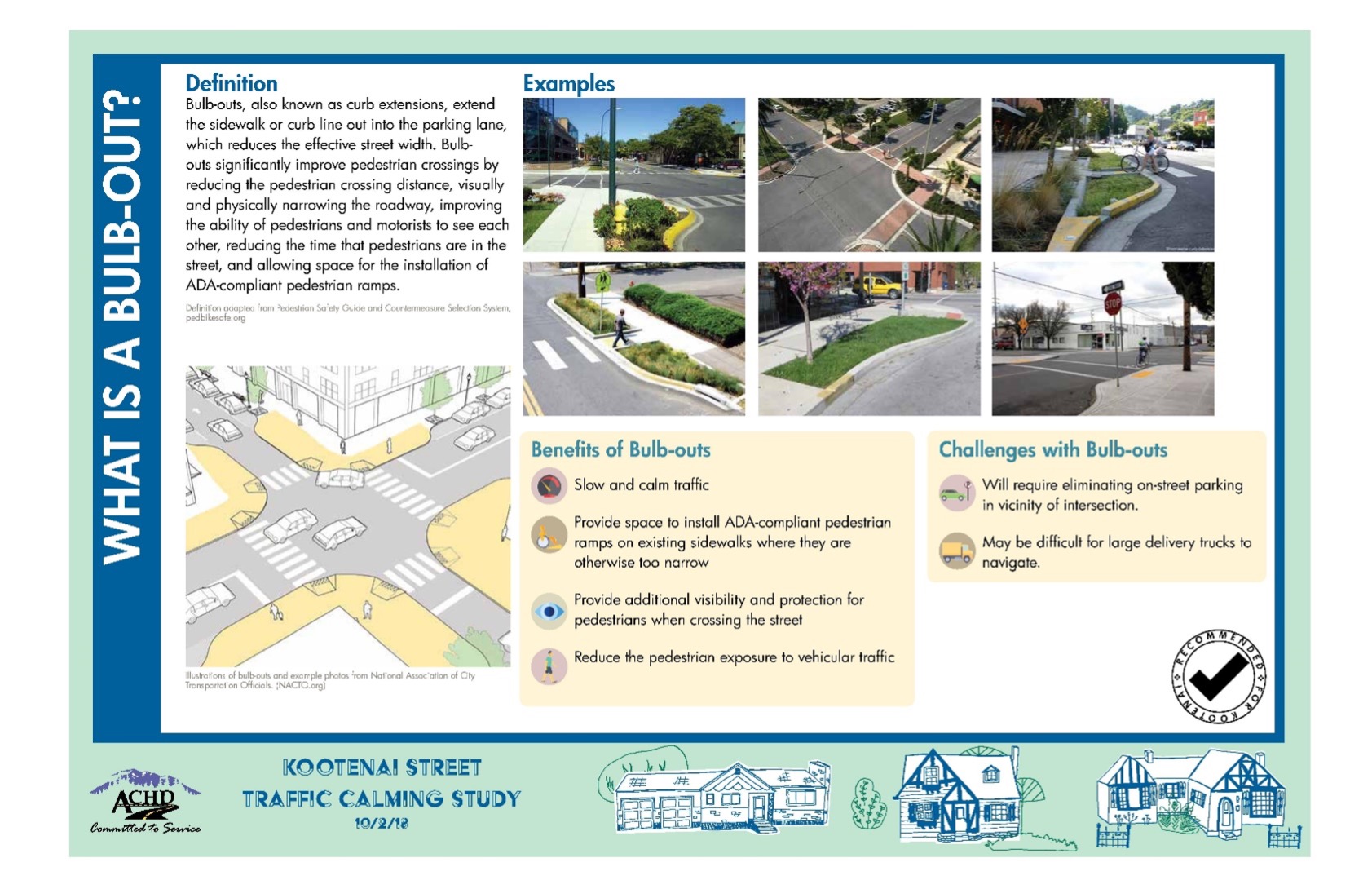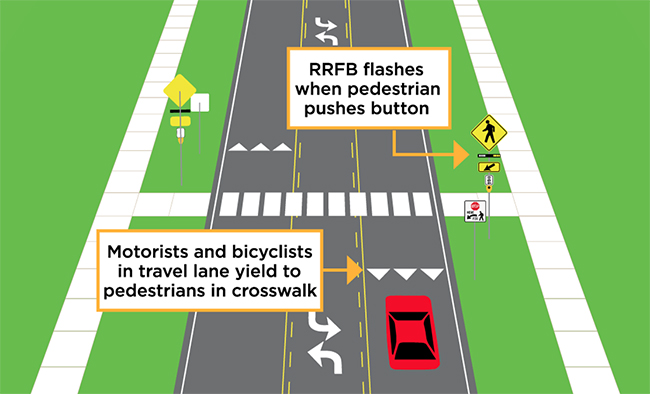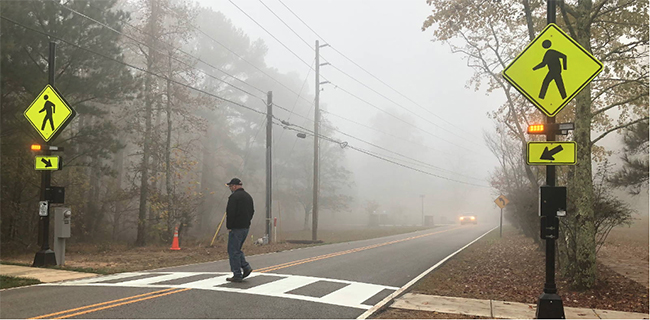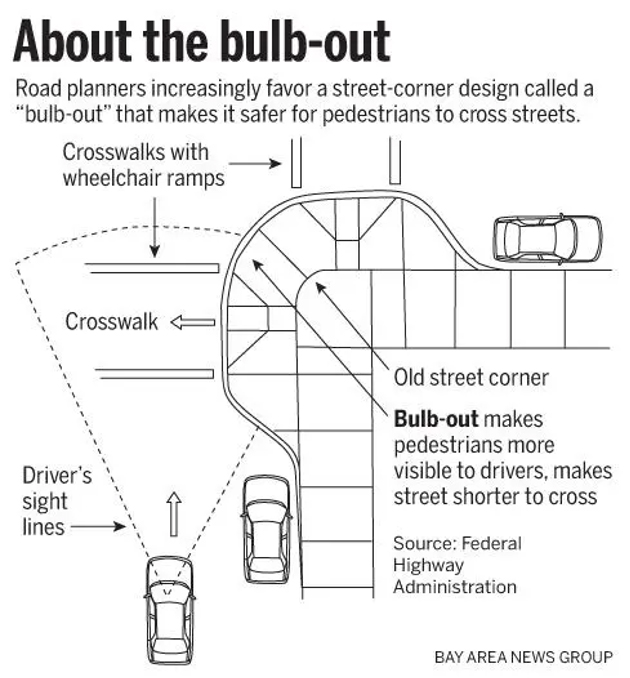
What is Access Management?
Access Management is a set of techniques to control access to highways, major arterials, and other roadways. Access Management includes several techniques that are designed to increase the capacity of these roads, manage congestion, and reduce crashes.
- Increasing spacing between signals and interchanges;
- Driveway location, spacing, and design;
- Use of exclusive turning lanes;
- Raised medians that prevent or limit certain movements across a roadway;
- Use of service and frontage roads; and
- Land use policies that limit right-of-way access to highways.
Source: FHWA
J-Turn
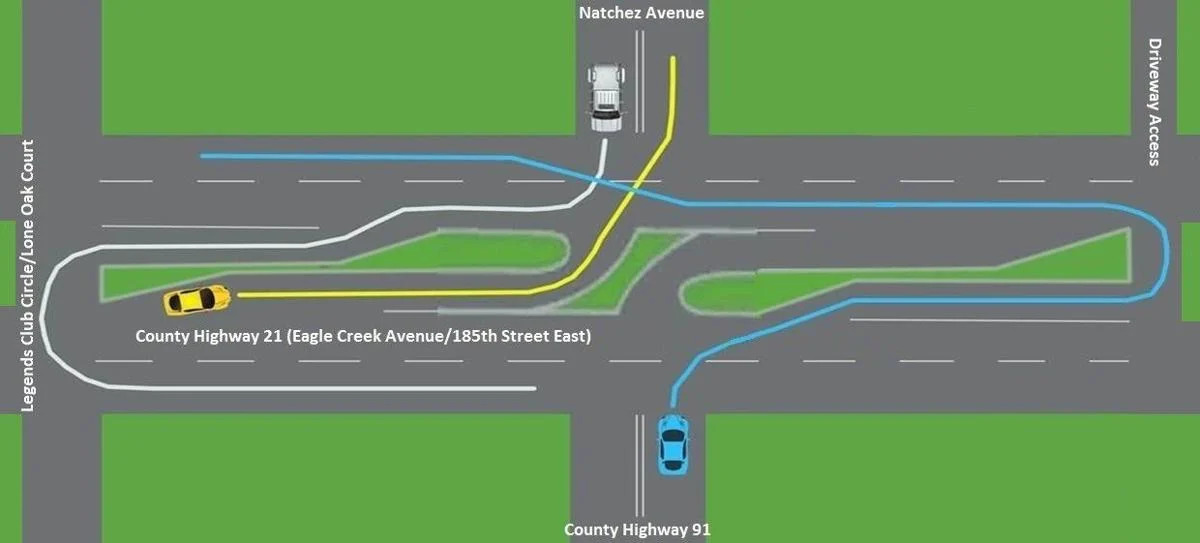
click image to enlarge
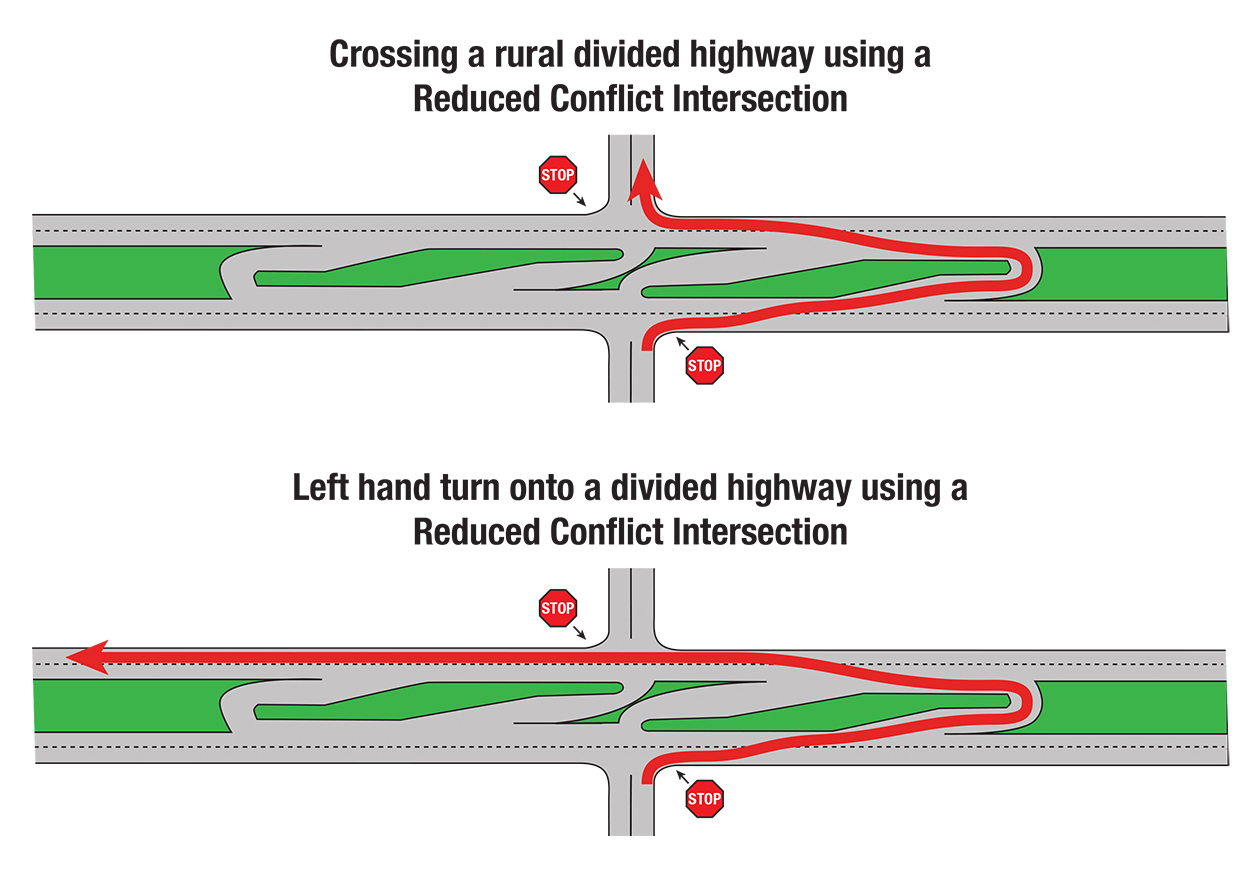
click image to enlarge
The J-Turn concept is a reconfiguration of the traditional intersection that is used to improve traffic flow. It is being used in many locations across Louisiana. It is a method that safely and efficiently manages high traffic volumes at intersections with multiple approaches along a divided highway. The J-Turn functions by redirecting through- and left-turning traffic on the side street approach to turn right proceed to the nearby U-Turn and then return to its original course.
J-Turns reduce the risk of crashes and specifically the risk of severe crashes such aside-collisions or T-bone type accidents and optimizes the capacity of our existing roadway and reduces wait time for left-turning traffic.
From an economic viewpoint, it provides an effective tool for reducing congestion while at the same time reducing construction costs. Because of their efficiency to deal with traffic, J-Turns can sometimes even replace signals. This drops maintenance costs significantly. J-Turns can take up less space than traditional interchanges between highways. They can cost less than traditional interchanges, averaging about $5 million less. J-Turns take less time to build than traditional interchanges. They can save a whole year of construction time.
Source: DOTD | DOTD J-Turn Brochure
Pavement Widening at U-Turns (Loons)
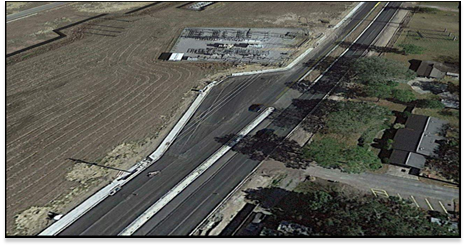
click image to enlarge
A loon is an expanded paved apron opposite a median crossover. The purpose is to provide additional space to facilitate the larger turning path of a commercial vehicle along narrow medians.
Source: FHWA
Bulb-Outs
Bulb-Outs, also known as curb extensions, extend the sidewalk or curb line out into the parking lane, which reduces the effective street width. Bulb-Outs significantly improve pedestrian crossings by reducing the pedestrian crossing distance, visually and physically narrowing the roadway, improving the ability of pedestrians and motorists to see each other, reducing the time that pedestrians are in the street, and allowing space for the installation of ADA-compliant pedestrian ramps.
Medians

click image to enlarge
Median treatments for roadways represent one of the most effective means to regulate access. According to an analysis of crash data in seven states, raised medians reduce crashes by over 40 percent in urban areas and over 60 percent in rural areas. Raised medians also provide extra protection for pedestrians. A study of median treatments in Georgia found that raised medians reduced pedestrian-involved crashes by 45 percent and fatalities by 78 percent, compared to two-way left-turn lanes.
Source: FHWA
Rectangular Rapid-Flashing Beacon (RRFBs)
Rectangular Rapid-Flashing Beacons (RRFBs) are pedestrian-actuated conspicuity enhancements used in combination with a pedestrian, school, or trail crossing warning sign to improve safety at uncontrolled, marked crosswalks.
Source: FHWA


